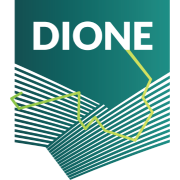Julia is an organic inspector at the Organic Certification Organization. As the experienced expert, she reviews farmers’ applications to verify that practices comply with the organic regulations, and then she conducts an on-site inspection. For certified operations, she visits once a year a selected farm for compliance check. It generally consists of looking for things like buffer zones from neighbouring farms to ensure that the organic integrity of crops is maintained and requesting additional data from the farmer for evaluating compliance like pest management, soil fertility, and other factors. If there are issues, she follows up on corrective actions.
Due to the number of operations she has to inspect every year, she often experiences difficulties to visit all plots or all parts of plots. Furthermore, one or two visits could not cover all stages of production (phenophases).
Due to the number of operations she has to inspect every year, she often experiences difficulties to visit all plots or all parts of plots. Furthermore, one or two visits could not cover all stages of production (phenophases).
1Scenario #1
Julia logs in to DIONE farmer’s compliance monitoring tool. The dashboard opens with the list of the farmers who are certified for organic production. The dashboard enables filtering by region, crop type and harvest time. She opens a selected farmers’ page and inspects the available data:
● Crop type map- She needs the dataset to be updated at the beginning and at the end of the vegetation period. She needs to see the crop type on adjacent plots, to assess critical time for inspection (according to a specific time for treatment of crops on adjacent plots).
● Mowing/harvest/ploughing marker map - Julia expects to receive the information shortly after the event happened. She will use it to update certified quantities. In case the crop is left on plot (not harvested) would issue only confirmation of status of the plots, instead of certificate for products.
●Biophysical crop parameters (NDVI, FAPAR, Leaf Chlorophyll Content and others) - Maria wants to get information if plants are under stress, this information is necessary for scheduling inspection in the most critical time for use of inputs in crop production.
● Non-productive EFA types map and permanent pastures map- Julia needs the maps to be produced annually. She wants to see EFA elements belonging to a selected farm. She picks an element and retrieves the information on the type of the EFA element and the area to assess size of area involved into organic production.
●Permanent pastures - Julia needs the data to be updated several times a year in cases there are frequent rotations during the year (for e.g. vegetables). She selects a pasture field and retrieves the information on the area, because she wants to assess the average areas used per animal.
●Farmers’ geo-tagged photos - Julia sees on the map the locations of the photos taken. She reviews the data submitted and evaluates if there is a need for additional inspection and what would be the focus of that inspection.
● Aerial imagery from drones - Julia uses these very high resolution images to check distant parts of the plots, buffer zones and neighbouring plots.
● Soil data and maps from spectrometers - Julia wants to see on the map all sample points for a certain region filtered for a certain soil property and she wants to click on a sampling point to retrieve the associated metadata. She uses it to cross-check data provided by the farmer.
Julia can see for each farmer the total harvested quantity of each crop type per farmer and the total area per producer.
By setting the dates on the timescale or on calendar, Julia can visualise historical data from previous seasons in order to check if crop rotations occurred. She triggers automatic generation of a report.
She imports additional data that can facilitate inspection.
2Scenario #2
Julia logs in to DIONE environmental performance tool. From the menu of generated environmental performance indicators and other relevant datasets for the area of interest, she selects EFA types as a proxy for biodiversity to be displayed on the map. She triggers calculation of the percentage of areas dedicated for environmental sustainability related to total agricultural area per producer.

